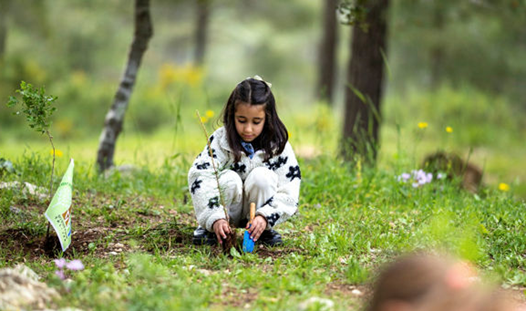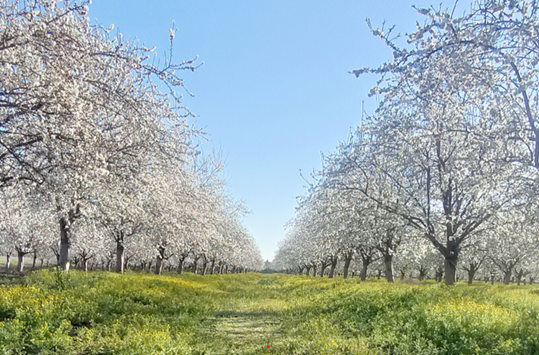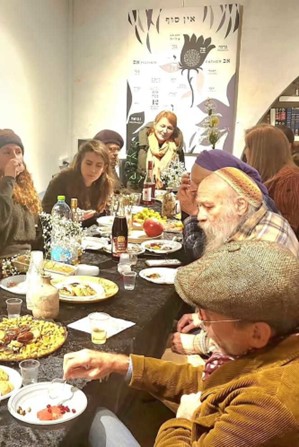Tu Bishvat: A Celebration of Renewal, Planting, and Traditional Flavors
The 15th of Shevat on the Jewish calendar—celebrated this year on Thursday February 13, 2025 —is celebrated as the New Year for Trees.

Planting saplings on Tu Bishvat. Credit: Avi Balaban, KKL archives
Commonly known as Tu Bishvat (the Hebrew date), this day marks the season in which the earliest-blooming trees in the Land of Israel emerge from their winter sleep and begin a new fruit-bearing cycle. This is also the time when the almond tree blossoms. Many locals and tourists alike flock to the countryside to enjoy the beauty of the stunning white almond blos In Israel, the holiday has developed over the years into a celebration of agriculture, tree-planting (the Israeli Arbor Day) and an ecological awareness day, with communities emphasizing all kinds of actions and activism related to the environment and the natural world.

Planting saplings on Tu Bishvat. Credit: Avi Balaban, KKL archives
The tradition of planting trees in Israel on Tu Bishvat began at the end of the nineteenth century and was adopted by the Jewish National Fund in the early twentieth century. Hundreds of new forests were planted throughout the land and eucalyptus trees were planted in the Hula valley at the turn of the century to stop the plague of malaria. Today, there are many tree-planting events for families and children that take place in the country’s forests on Tu Bishvat.
Jewish communities in the Diaspora, longing for the Land of Israel, developed the custom of eating dried fruits from Israel. In the 17th century, the Kabbalists of Safed introduced a new tradition—the Tu Bishvat Seder, modeled after the Passover Seder. This Seder involved drinking four cups of white and red wine, blessings, Torah teachings, and a feast of dozens of (dried) fruits, all connected to the natural bounty of the Land of Israel.

Almond trees in blossom. Credit: Jana Sotil
This tradition remains today, with many in Israel and around the world marking the day by eating fruit, particularly from the kinds that are singled out in the Bible in its praise of the bounty of the Holy Land: grapes, figs, pomegranates, olives and dates.
A Recipe for the Holiday – taken from a 3,600-year-old recipe found in Egypt, from the time tradition says the Israelites resided there

Tu Bishvat Seder. Credit Pic: Eyal Riess, Tzfat Kabbalah Center
Date Candies
Ingredients:
- 1 cup dates
- 1 teaspoon cinnamon
- 1/2 teaspoon ground cardamom
- 1/2 cup fresh nuts
- 2 tablespoons heated date honey
- A plate of crushed almonds
Instructions:
- Pit the dates, mash them, and mix with a small amount of water to create a paste.
- Add the spices and mix well.
- Crush the nuts and add them to the mixture.
- Shape the mixture into small candy-sized balls.
- Coat the balls with warm date honey and roll them in the crushed almonds.
Serve and enjoy!
som, a harbinger of spring and the rebirth of nature.
Israel Government Tourist Office in Ukraine